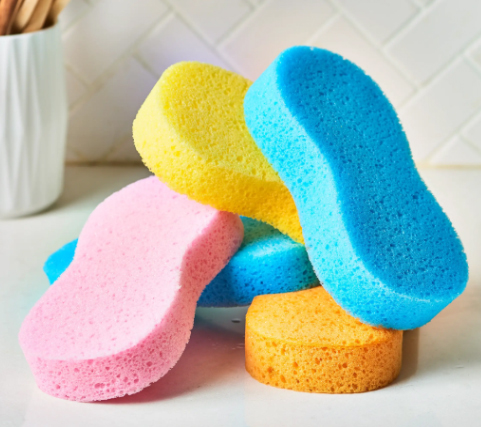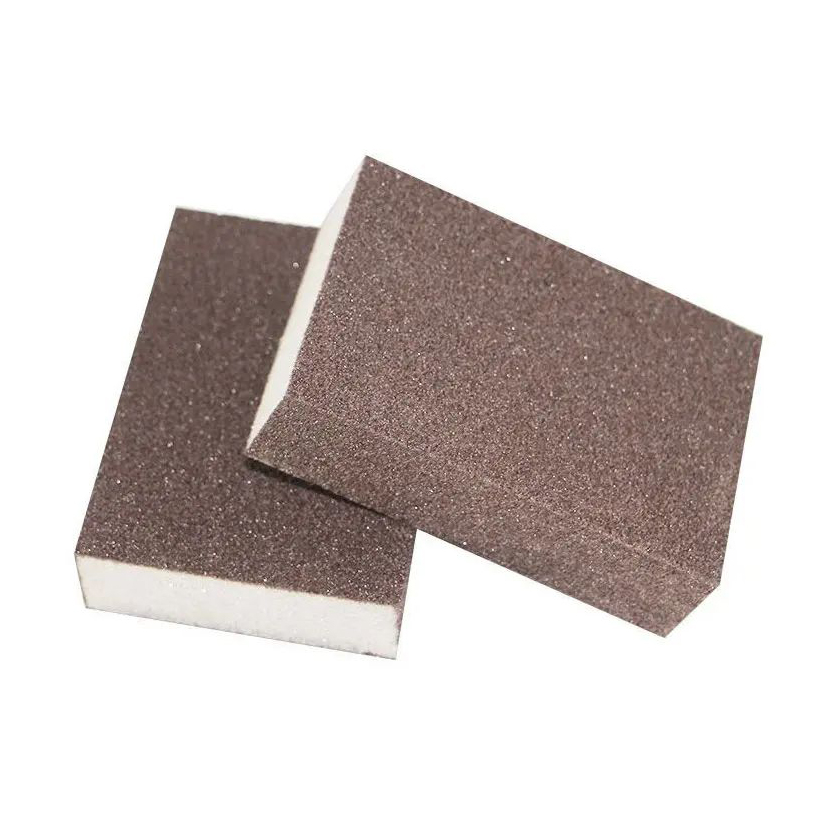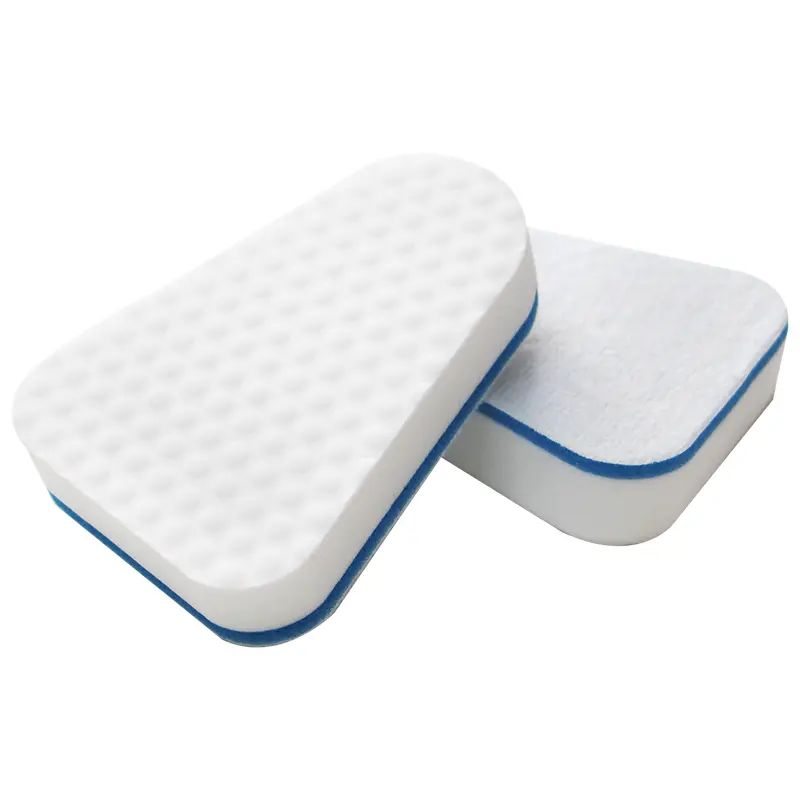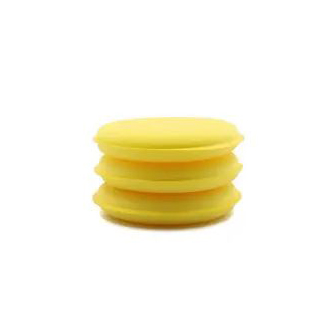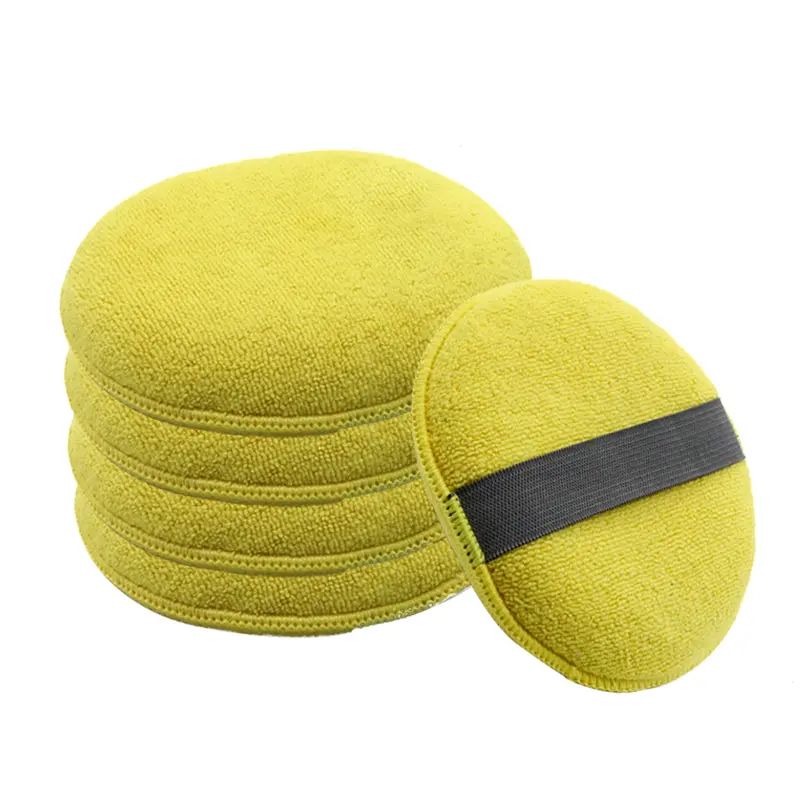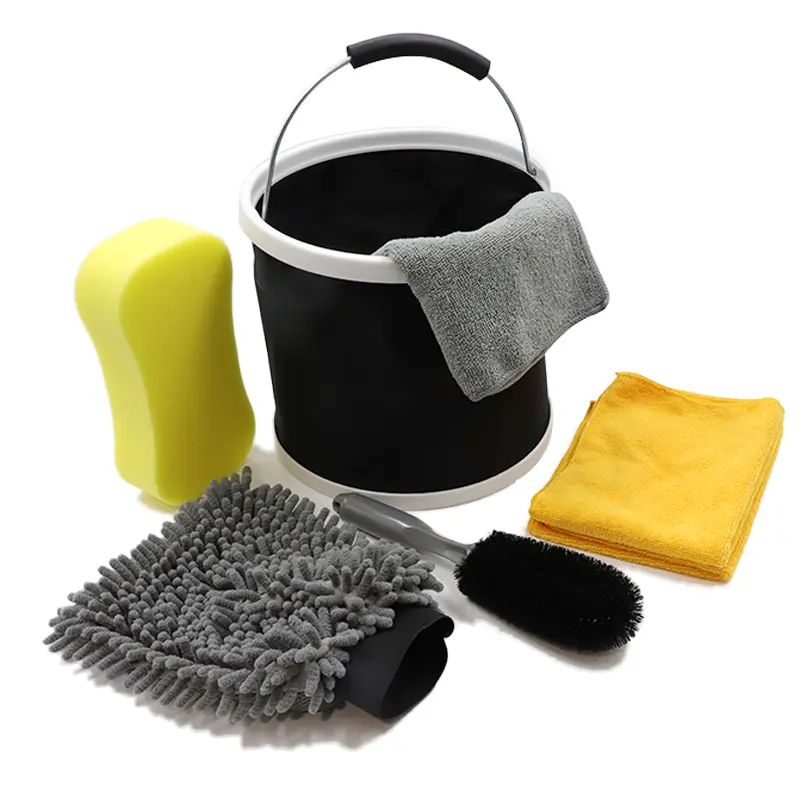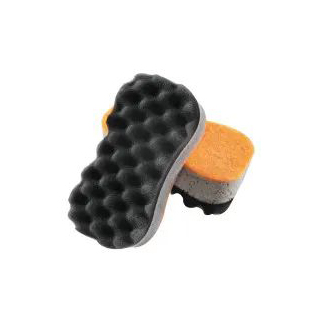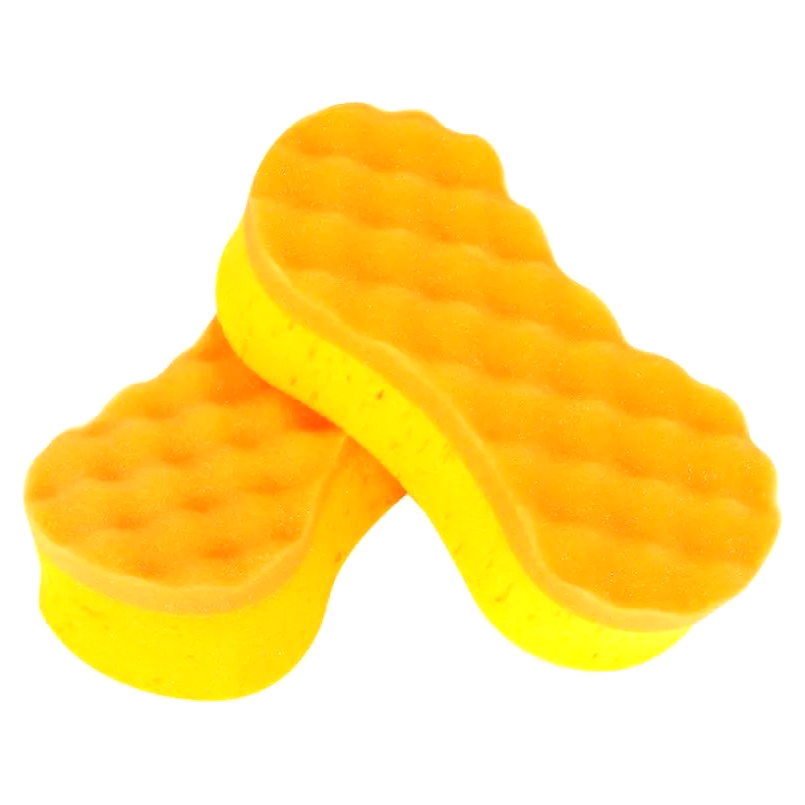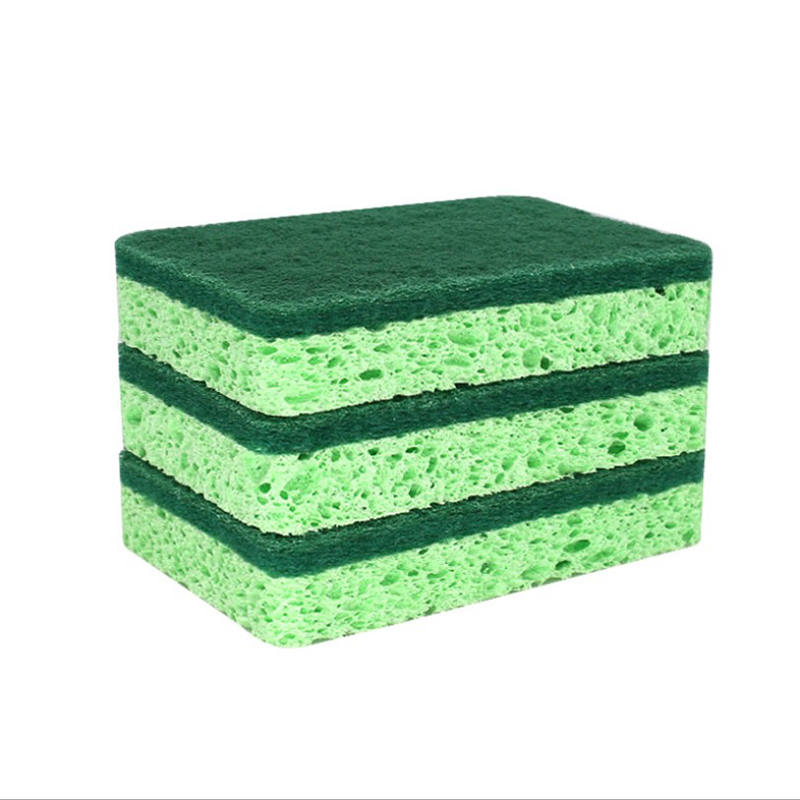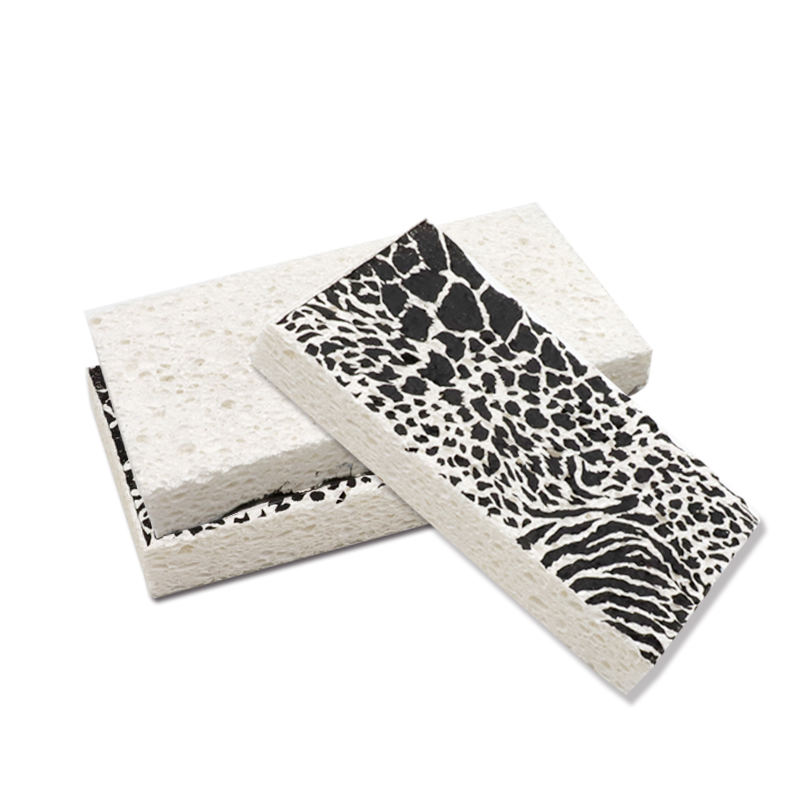از اسفنج ها گرفته تا گیاهان طبیعی: چگونه اسفنج حمام مناسب را برای پوست و سیاره خود انتخاب کنید
Introduction to Bath sponges
Bath sponges are a common tool used in daily personal hygiene routines. They come in various shapes, sizes, and materials, and their primary purpose is to help cleanse and exfoliate the skin during bathing. By using a bath sponge, people can enhance their bathing experience, promote better skin health, and ensure a more effective cleansing process.
However, not all bath sponges are created equal, and choosing the right one can significantly impact skin health. From skin sensitivity to the effectiveness of exfoliation, the type of bath sponge you use plays a cruciafl role in maintaining healthy skin.
What Are Bath Sponges?
Bath sponges are soft, porous materials used to lather up soap or body wash, allowing for an easy application of cleansing products. These sponges help create a foam that can remove dirt, sweat, and oil from the skin’s surface. Bath sponges are generally divided into two categories:
- Natural Sponges : These are made from the fibrous skeleton of marine sponges. They are biodegradable and have a gentle texture, making them ideal for sensitive skin.
- Synthetic Sponges : These are made from man-made materials like polyester or polyurethane. They are often more durable and come in a variety of textures and shapes.
While natural sponges are gentle and sustainable, synthetic sponges are more commonly used due to their affordability, variety, and long-lasting nature.
The Role of Bath Sponges in Skin Health
When used properly, bath sponges can contribute to healthy skin in several ways:
- Exfoliation : Bath sponges can help remove dead skin cells from the outer layer of the skin, making your skin look smoother and feel softer. This process also prevents clogged pores, which can lead to acne or other skin issues.
- Improved Circulation : The gentle scrubbing motion with a bath sponge can stimulate blood flow to the skin, promoting a healthy complexion.
- Effective Cleansing : A good sponge can ensure that soap and body wash are spread evenly across the skin, allowing for better cleansing. This helps remove impurities, excess oils, and sweat from the skin’s surface.
Given these benefits, it’s clear that using the right bath sponge is essential to achieving clear, smooth, and healthy skin.
Why Choosing the Right Bath Sponge Matters
There are numerous factors to consider when choosing the right bath sponge, and selecting the wrong one can lead to skin irritation, dryness, or even infection. Here are a few reasons why it matters to select the right bath sponge:
1. Skin Sensitivity
Everyone has different skin types, and some people may have skin conditions that make them more susceptible to irritation or discomfort. For example, people with eczema, rosacea, or acne may need to be particularly cautious about their choice of bath sponge.
- Sensitive Skin : Individuals with sensitive skin should avoid harsh, abrasive sponges that may cause redness or irritation. In such cases, a natural sea sponge or a soft synthetic sponge would be ideal.
- Oily Skin : People with oily skin may benefit from an exfoliating sponge that helps remove excess oil and debris, preventing clogged pores and acne.
2. Exfoliation Needs
Exfoliation is crucial for maintaining healthy skin, but the type and frequency of exfoliation depend on skin type. Some individuals may need more frequent exfoliation to remove dead skin cells, while others might prefer to exfoliate less often.
- Rough Exfoliation : For individuals with thicker skin or areas like elbows and knees that need extra attention, a rougher, more abrasive sponge might be helpful.
- Gentle Exfoliation : For delicate skin or those who prefer a milder scrub, soft bath sponges with a finer texture are preferable.
Exfoliation is important for skin renewal, but over-exfoliating or using harsh sponges can damage the skin’s protective barrier, leading to dryness or irritation.
3. Hygiene Concerns
A bath sponge that isn’t regularly cleaned can harbor bacteria and mold, which can lead to infections or skin irritations. Choosing a sponge that is easy to clean and dries quickly can help prevent these issues. Additionally, consider the material of the sponge. Natural sponges are typically more prone to harboring bacteria compared to synthetic ones, which can be washed more thoroughly.
4. Durability
The durability of a bath sponge is important for both practical and hygiene reasons. A sponge that wears down quickly or falls apart after a few uses can be frustrating and unhygienic. Look for sponges that are built to last and can withstand regular use without losing their texture or effectiveness.
5. Environmental Impact
With growing awareness of environmental issues, many people now consider the sustainability of their bath products. Natural sponges are biodegradable and environmentally friendly, while synthetic sponges can contribute to plastic waste. Opting for sustainable, eco-friendly alternatives is not only good for your skin but also for the planet.
Key Differences in Bath Sponges
The chart below highlights some key differences between natural and synthetic sponges:
| Feature | Natural Sponges | Synthetic Sponges |
|---|---|---|
| Material | Made from marine sponge fibers | Made from plastic or synthetic materials |
| Exfoliation | Gentle exfoliation, soft texture | Varies: can be rough or soft depending on the type |
| Durability | Can wear out quickly, fragile | Long-lasting, more durable |
| Hygiene | Needs thorough cleaning, prone to bacteria growth | Easier to clean, less bacteria-prone |
| Eco-friendly | Biodegradable, sustainable | Non-biodegradable, can contribute to plastic waste |
| Price | Generally more expensive | More affordable |
Types of Bath Sponges
When selecting a bath sponge, it’s important to understand the different types available and how they affect your skin and bathing experience. The three most common types of bath sponges are Natural Sea Sponges , Synthetic Sponges , and Loofahs (both natural and synthetic). Each type has its own set of advantages and drawbacks, and the best choice for you will depend on your skin type, budget, and personal preferences.
Natural Sea Sponges
Natural sea sponges are harvested from the ocean and have been used for centuries in bathing and cleaning. These sponges are known for their soft, gentle texture and natural exfoliating properties.
Pros of Natural Sea Sponges
- Gentle Exfoliation : Natural sea sponges offer a soft yet effective exfoliation, making them ideal for sensitive skin. The fibrous structure of the sponge helps remove dead skin cells without causing irritation, leaving the skin feeling smooth and refreshed.
- Natural and Biodegradable : One of the major advantages of natural sea sponges is that they are environmentally friendly. Since they are harvested from the ocean, they are biodegradable, which makes them a sustainable choice for eco-conscious consumers.
- Hypoallergenic : Sea sponges are naturally hypoallergenic, making them a safe option for those with allergies or skin conditions like eczema or psoriasis.
- Antibacterial Properties : Natural sponges have been known to resist the growth of bacteria and mold when maintained properly. This makes them a healthier choice for people looking to avoid bacterial build-up in their bath tools.
Cons of Natural Sea Sponges
- More Expensive : Natural sea sponges are generally more expensive than their synthetic counterparts. The harvesting process is labor-intensive, and high-quality sponges can cost significantly more.
- Requires Careful Cleaning : While natural sponges are durable, they require more attention to hygiene. They must be thoroughly rinsed and dried after every use to prevent mold or bacterial growth. This can be time-consuming compared to synthetic sponges, which are easier to clean.
- Limited Durability : Natural sponges, while long-lasting, may degrade faster than synthetic ones, especially if not properly maintained.
Synthetic Sponges
Synthetic sponges are made from man-made materials like polyester, polyurethane, or other plastics. They are a popular choice due to their affordability, availability, and variety of textures and designs.
Pros of Synthetic Sponges
- Affordable : Synthetic sponges are generally much cheaper than natural sea sponges. This makes them a budget-friendly option for people who need a bath sponge for daily use without spending a lot of money.
- Durable : Synthetic sponges tend to be more durable than natural sponges. They can withstand frequent use without breaking down or losing their effectiveness. Some synthetic sponges can last for months, making them a cost-effective option in the long run.
- Variety of Textures and Shapes : Synthetic sponges come in a wide range of textures, sizes, and shapes. Whether you want a soft sponge for a gentle cleanse or a rougher one for exfoliation, you can easily find a synthetic sponge that suits your needs.
- Easier to Clean : Synthetic sponges are generally easier to clean and maintain than natural sponges. They don’t require as much attention to drying and disinfecting, and they are less likely to develop mold or mildew if rinsed properly.
Cons of Synthetic Sponges
- Can Be Abrasive : Some synthetic sponges can be rough on the skin, especially if they are made with a coarse texture. While this can be beneficial for exfoliating thicker skin areas, it may irritate sensitive skin or cause abrasions.
- Less Eco-Friendly : Synthetic sponges are made from plastic or other non-biodegradable materials. As a result, they contribute to plastic waste, which is a growing environmental concern. They also don’t break down naturally over time, unlike natural sponges.
- Less Hypoallergenic : Synthetic sponges may not be as hypoallergenic as natural sponges. The materials used in their production can sometimes cause allergic reactions or irritations, especially for those with sensitive skin.
Loofahs
Loofahs are another popular option for exfoliating and cleansing the skin. Unlike sponges, which come from marine animals, loofahs are plant-based. They are made from the fibrous skeleton of the loofah plant, a type of gourd.
Natural Loofahs
Natural loofahs are made from the dried fruit of the loofah plant. They are a popular choice for people looking for an eco-friendly and effective exfoliation tool.
Pros of Natural Loofahs
- Plant-Based : Natural loofahs are made from a renewable resource, making them an environmentally friendly option. Unlike synthetic sponges, they do not contribute to plastic waste and are fully biodegradable.
- Good Exfoliation : Loofahs provide a deep and thorough exfoliation. The fibrous texture helps remove dead skin cells and unclog pores, leaving the skin feeling smooth and refreshed.
- Gentle on Skin : While loofahs are rougher than some other sponges, they are generally less abrasive than synthetic sponges. They are a good choice for people with normal to combination skin, as they offer a moderate level of exfoliation.
Cons of Natural Loofahs
- Requires Maintenance : Like natural sea sponges, loofahs require proper cleaning and drying to avoid bacterial or mold growth. If not properly maintained, they can become a breeding ground for germs.
- Not as Durable : Natural loofahs wear out more quickly than synthetic sponges and may need to be replaced every few months, depending on usage.
Synthetic Loofahs
Synthetic loofahs are made from nylon or other synthetic materials designed to mimic the texture of natural loofah fibers. They are more durable and often come in a wider variety of colors and styles.
Pros of Synthetic Loofahs
- More Durable : Synthetic loofahs are typically more durable than natural ones. They can last longer without breaking down, even with frequent use.
- Less Prone to Bacteria : Since synthetic loofahs are made from non-absorbent materials, they are less likely to harbor bacteria or mold compared to natural loofahs. They are easier to rinse clean and dry quickly.
- Available in Different Textures : Synthetic loofahs come in a variety of textures, making them suitable for different skin types and exfoliation needs. Some may be soft for gentle scrubbing, while others may be more abrasive for deep exfoliation.
Cons of Synthetic Loofahs
- Less Eco-Friendly : Like synthetic sponges, synthetic loofahs are made from non-biodegradable materials. They contribute to plastic waste and may not break down naturally over time.
- Can Be Abrasive : Some synthetic loofahs can be rougher than natural loofahs, making them unsuitable for those with sensitive skin. They may cause irritation or discomfort if used too frequently or too aggressively.
Key Differences Between Bath Sponges, Loofahs, and Sponges
The table below summarizes the key features of natural sea sponges, synthetic sponges, and loofahs:
| Feature | Natural Sea Sponges | Synthetic Sponges | Loofahs (Natural) | Loofahs (Synthetic) |
|---|---|---|---|---|
| Material | Marine sponge fibers | Synthetic materials (polyester, polyurethane) | Dried loofah plant fibers | Synthetic fibers (nylon, etc.) |
| Exfoliation | Gentle, soft exfoliation | Varies from soft to rough | Moderate exfoliation | Varies: can be soft or rough |
| Durability | Moderate, requires care | High, long-lasting | Moderate, needs regular replacement | High, long-lasting |
| Eco-friendly | Biodegradable, sustainable | Not biodegradable, contributes to waste | Biodegradable, eco-friendly | Not biodegradable, contributes to waste |
| Price | Expensive | Affordable | Moderate | Affordable |
| Hygiene | Requires regular cleaning and drying | Easy to clean, less prone to bacteria | Requires regular cleaning and drying | Easy to clean, less prone to bacteria |
How to Choose the Right Bath Sponge
When selecting a bath sponge, several factors come into play, including your skin type, exfoliation needs, hygiene, and maintenance. Choosing the right sponge can make a significant difference in the overall quality of your shower or bath experience, as well as your skin’s health. Here’s a detailed guide to help you choose the best bath sponge for your personal needs.
1. Consider Your Skin Type
The first thing you should evaluate when choosing a bath sponge is your skin type. Different sponges work better for different types of skin, and using the wrong one could cause irritation or insufficient cleaning.
Sensitive Skin
For sensitive skin, it’s crucial to choose a bath sponge that’s gentle and non-abrasive. Sponges made from natural materials like sea wool or soft honeycomb sponges are ideal as they don’t irritate the skin and provide a smooth, soothing touch. These sponges also tend to retain moisture, preventing skin from drying out during use.
Oily Skin
If you have oily skin, you may need a sponge that provides a bit more exfoliation to remove excess oils, dirt, and impurities from your skin. A mesh or body exfoliating sponge is great for this, as they offer a deeper cleanse without being too harsh.
Dry Skin
Dry skin often benefits from a softer, more moisturizing bath sponge. A Konjac sponge is perfect for this type of skin because it is gentle, hydrating, and has a slightly spongy texture that works well to lock in moisture. Avoid rough exfoliating sponges unless you’re looking for a more intense exfoliation.
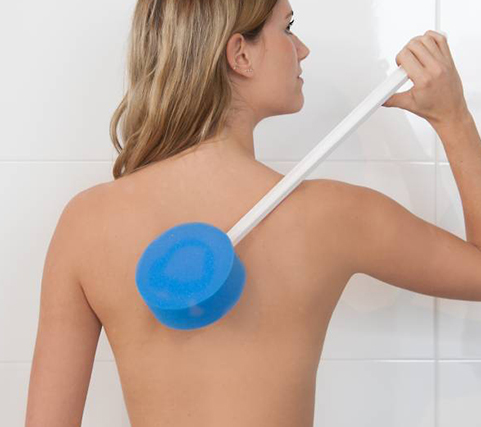
2. Evaluate the Level of Exfoliation Needed
Not all bath sponges are created equal when it comes to exfoliation. Depending on how much exfoliation your skin requires, the sponge’s texture and material will determine how effective it is.
Light Exfoliation
If you only need mild exfoliation to remove dead skin cells and improve circulation, a honeycomb sponge or a Konjac sponge would be ideal. Both are gentle on the skin, providing a light, non-abrasive scrub that removes the top layer of dead skin.
Moderate Exfoliation
For moderate exfoliation, consider using a mesh sponge or a bath & shower loofah . These sponges provide a deeper scrub, helping to smooth out rough patches of skin and promoting better blood circulation.
Intensive Exfoliation
If you’re looking to remove stubborn dead skin or want a more intense exfoliation, a body exfoliating sponge or African net sponge would be the best options. These sponges have a rougher texture that can tackle tough, flaky skin, leaving your skin feeling smoother and revitalized.
3. Think About Hygiene and Maintenance
Hygiene is an important factor when choosing a bath sponge because some sponges harbor bacteria if not cleaned and dried properly. It’s essential to select a sponge that is easy to maintain and dries quickly between uses.
Sea Wool Sponge
Sea wool sponges are naturally resistant to bacteria, mold, and mildew due to their antimicrobial properties. These sponges are easy to rinse and dry quickly, making them a hygienic option for daily use.
Mesh Sponges and Loofahs
Both mesh sponges and loofahs tend to trap moisture in their fibers, which can lead to bacteria build-up. However, if you’re diligent about rinsing them thoroughly and allowing them to dry after each use, they can be relatively hygienic. Consider hanging them in a well-ventilated area.
Konjac Sponge
Konjac sponges are naturally anti-bacterial and hypoallergenic, which helps keep them clean and safe for sensitive skin. They are biodegradable, making them an eco-friendly choice, and they dry relatively quickly.
Top Recommended Bath Sponges
There are many types of bath sponges available in the market, each offering unique benefits for different skin types and exfoliation needs. Below are some of the most popular and highly rated options:
Sea Wool Sponge
A natural sea sponge harvested from the ocean, the Sea Wool Sponge is highly regarded for its softness and hypoallergenic properties. It’s gentle on sensitive skin, making it suitable for people with conditions like eczema or psoriasis. It also has natural antibacterial properties, helping to prevent the growth of mold or mildew, and provides a luxurious, silky-feel when used in the bath or shower.
Honeycomb Sponge
The Honeycomb Sponge is known for its unique texture that mimics the structure of a honeycomb. Its soft yet resilient design ensures a gentle exfoliation, making it suitable for those with sensitive skin. This sponge can hold a lot of water, allowing for a rich lather with just a small amount of body wash. It’s also a good option for people with dry skin as it helps retain moisture during use.
Konjac Sponge
The Konjac Sponge is made from the root of the Konjac plant and is known for its gentle exfoliating abilities. It’s highly recommended for those with dry or sensitive skin due to its soft texture and moisturizing properties. Konjac sponges are also biodegradable, making them an environmentally friendly option. They come in different variations, such as those infused with charcoal for oily skin or green tea for additional skin benefits.
Body Exfoliating Sponge
For a deeper exfoliation, the Body Exfoliating Sponge is a must-have. These sponges have a coarser texture that effectively sloughs off dead skin cells, revealing smoother, healthier skin underneath. They’re ideal for individuals looking to combat rough skin or issues like cellulite and can be used on both the body and face for a smooth, polished look.
Mesh Sponge
The Mesh Sponge , also known as a pouf or loofah, is lightweight and provides a moderate level of exfoliation. It creates a foamy lather and is great for people who want to exfoliate while cleaning their skin. It’s not as soft as some of the natural options, but it’s perfect for oily skin or those who want to scrub away dirt and grime.
Bath & Shower Sponge Loofah
A Loofah is made from the fibrous interior of the loofah plant, offering an exfoliating experience that’s somewhere between light and moderate. It’s great for people with normal skin who want to enjoy a spa-like experience in their showers. Loofahs come in various sizes and shapes, and they’re easy to maintain as long as you let them dry properly after each use.
African Net Sponge
The African Net Sponge is an exfoliating tool made from a rough, knotted mesh material. It’s particularly famous for deep cleaning and exfoliating the skin. Commonly used in African and Caribbean cultures, it’s great for tackling tougher skin and can improve circulation. This sponge is best for people who need intense exfoliation and prefer a more vigorous scrub.
| Product Name | Type | Best For | Key Feature |
|---|---|---|---|
| Sea Wool Sponge | Natural Sea Sponge | Sensitive skin, gentle exfoliation | Antibacterial, soft, hypoallergenic |
| Honeycomb Sponge | Synthetic, Soft | Sensitive skin, light exfoliation | Water retention, gentle exfoliation |
| Konjac Sponge | Natural Plant-based | Dry skin, sensitive skin | Hydrating, biodegradable, gentle on skin |
| Body Exfoliating Sponge | Synthetic | Moderate to heavy exfoliation | Coarse texture for deeper exfoliation |
| Mesh Sponge | Synthetic Mesh | Oily skin, moderate exfoliation | Creates a rich lather, easy to use |
| Bath & Shower Sponge Loofah | Natural Loofah | Normal skin, moderate exfoliation | Fibrous texture for a spa-like experience |
| African Net Sponge | Natural Mesh | Heavy exfoliation, tough skin | Rough texture, deep cleansing |
How to Use a Bath Sponge Properly
Using a bath sponge properly can elevate your bathing or showering routine, ensuring that your skin is not only clean but also healthy. A bath sponge, when used correctly, helps exfoliate the skin, improve circulation, and provide a soothing, luxurious experience. Follow these detailed steps to get the most out of your bath sponge.
1. Wet the Sponge Thoroughly
The first step in using a bath sponge properly is to ensure that it is fully soaked with water. Whether you are using a natural sea sponge or a synthetic mesh pouf, it is essential to wet the sponge before using it.
Why Wetting the Sponge is Important
When you first soak the sponge, it softens the fibers, which allows for a smoother application of soap or body wash. A dry sponge can feel scratchy and uncomfortable on your skin, leading to irritation. Wetting the sponge helps create a gentle lather and improves its ability to glide over your skin without tugging.
How to Wet the Sponge
Simply hold the sponge under warm running water for about 10-15 seconds, pressing gently to allow it to absorb as much water as possible. For a natural sea sponge, which has a porous structure, you may need to squeeze it a few times to ensure it’s fully hydrated. For synthetic sponges, they usually absorb water quickly, but make sure to give them a thorough rinse.
2. Apply Soap or Body Wash
Once your bath sponge is properly wet, it’s time to apply your soap, body wash, or shower gel. You can either apply the soap directly onto the sponge or into your hands to create a lather. The amount of product you use will depend on the type of sponge and how much lather you prefer.
How Much Soap to Use
For most bath sponges, a small amount of body wash or soap is sufficient. A pea-sized dollop or a few pumps of liquid body wash can create an abundant lather when worked into the sponge. Using too much soap can create excessive lather that may be difficult to rinse off, leaving a residue on your skin. It’s important to find the right balance for a smooth, comfortable shower experience.
Choosing the Right Soap
While any soap or body wash can work with a bath sponge, it’s best to choose one that suits your skin type. For dry skin, opt for a moisturizing body wash, while those with oily skin may prefer a deep-cleansing or exfoliating body wash. Always choose a mild soap if you have sensitive skin, as stronger products can strip away natural oils, leading to irritation.
3. Gently Scrub Your Body in Circular Motions
After applying the soap, the next step is to start scrubbing your body gently with the bath sponge. It’s essential to use gentle pressure and circular motions to clean your skin without causing any harm or irritation. This technique allows for even exfoliation and a thorough cleansing of your entire body.
Why Circular Motions are Beneficial
Circular motions are key to a good scrubbing technique because they not only help in spreading the soap evenly but also stimulate circulation. This action encourages blood flow and can give your skin a healthier, glowing appearance. Circular movements can also help exfoliate the skin by loosening dead skin cells, promoting smoother and softer skin over time.
How to Scrub Different Body Areas
- For Sensitive Areas: Be gentle when scrubbing areas like your face, neck, and underarms, as the skin here is more delicate. You can use a soft sponge like the Konjac sponge for these regions to prevent irritation.
- For Rough Skin Areas: Areas like elbows, knees, and heels tend to have thicker skin. You can use a slightly firmer sponge like the body exfoliating sponge or African net sponge on these areas to get rid of dry patches and improve texture.
- For Your Back: Use long, sweeping motions to scrub your back, as this area can be hard to reach. You might consider using a sponge with a longer handle for easier access.
4. Rinse Thoroughly After Each Use
After thoroughly scrubbing your body with the bath sponge, it’s important to rinse both your skin and the sponge properly to remove all the soap and body wash. Leaving soap residue on your skin can lead to dryness, irritation, and clogged pores, while not cleaning the sponge well can cause the buildup of bacteria.
Rinsing Your Skin
Once you’ve scrubbed all over, use warm water to rinse your body thoroughly. Ensure that there is no soap or lather left behind. Make sure to gently rinse all sensitive areas as well, including your face and neck, to avoid leaving any soap film that can lead to breakouts or dryness.
Rinsing the Sponge
After using the sponge, squeeze it out to remove excess water and soap. Run it under warm water for a few seconds until the soap has been fully washed away. If you’re using a natural sea sponge, you can press it gently to remove water. For synthetic sponges, squeeze until the soap runs clear. This is crucial to prevent any soap or product buildup in the fibers, which could cause your sponge to harbor bacteria.
5. Dry the Sponge Properly
Proper drying of your bath sponge is essential for both hygiene and longevity. After rinsing, squeeze out as much water as possible and hang the sponge in a well-ventilated area to dry completely. This helps to prevent bacteria or mold growth, which can occur if the sponge is left damp in a confined space.
How to Dry Different Types of Sponges
- Natural Sea Sponges: These sponges are more delicate and should be gently squeezed to remove excess water. Hang them in a dry, airy place, such as a towel rack or shower hook, where they can fully dry out.
- Synthetic Sponges (e.g., Mesh or Loofah): Synthetic sponges tend to dry more quickly, but they still need to be squeezed and hung in a place where air circulation is good. Avoid leaving them in a damp environment, such as a closed shower caddy or bag.
How Often Should You Replace Your Sponge?
Over time, bath sponges lose their ability to maintain an effective lather and their texture may degrade. Natural sponges, when properly cared for, can last for several months, while synthetic sponges may need to be replaced more frequently, typically every 2 to 3 months. If your sponge begins to smell musty or appears worn out, it’s time for a new one.
Summary of Proper Bath Sponge Usage
| Step | Action | Key Point |
|---|---|---|
| 1. Wet the Sponge | Soak sponge thoroughly under warm water | Ensure sponge is fully hydrated for a smooth application |
| 2. Apply Soap/Body Wash | Use a small amount of soap or body wash | Apply enough to create a lather, but avoid overuse |
| 3. Scrub in Circular Motions | Gently scrub your skin using circular motions | Promotes even exfoliation and improves circulation |
| 4. Rinse Thoroughly | Rinse skin and sponge thoroughly after use | Remove all soap and body wash to prevent residue buildup |
| 5. Dry the Sponge Properly | Squeeze out excess water and hang to dry | Prevent bacteria growth by ensuring sponge is fully dry before reuse |
Cleaning and Maintaining Your Bath Sponge
Proper cleaning and maintenance of your bath sponge are essential to ensure hygiene, prolong its lifespan, and prevent any potential skin issues caused by bacteria or mold growth. A clean sponge not only provides better exfoliation but also helps keep your skin healthy and free from harmful pathogens.
1. Why Cleaning is Essential to Prevent Bacteria Growth
Bath sponges, particularly those used in the shower, are prone to moisture buildup. When sponges remain wet for extended periods, they create an ideal environment for bacteria, fungi, and mildew to grow. If you don’t clean your bath sponge regularly, these microorganisms can thrive, and using a contaminated sponge can lead to skin irritation, acne, or infections.
Harmful Effects of Bacteria on Your Skin
- Skin Irritations: Bacteria buildup can cause redness, itchiness, and rashes, especially for people with sensitive skin.
- Acne Breakouts: Dirty sponges, especially if they come into contact with your face, can contribute to clogged pores, leading to breakouts.
- Fungal Infections: If not cleaned properly, your bath sponge can become a breeding ground for fungi, which may lead to conditions like athlete’s foot or ringworm.
For these reasons, regular cleaning and proper maintenance of your bath sponge are crucial in maintaining both the sponge’s effectiveness and your skin’s health.
2. Cleaning Methods
There are several ways to clean your bath sponge effectively. The following methods will help you maintain hygiene and ensure your sponge stays fresh.
Rinsing After Each Use
The simplest and most effective way to prevent bacteria buildup is to rinse your sponge thoroughly after every use.
- How to Rinse:
After you’ve finished scrubbing your body, squeeze the sponge to remove excess water and soap. Rinse it under warm water to wash out all soap residue and impurities. - Why It’s Important:
Rinsing immediately after use prevents soap scum, oils, and dirt from accumulating in the fibers, reducing the risk of bacterial growth. Additionally, it prevents your sponge from retaining a soapy residue that could irritate your skin the next time you use it.
Weekly Cleaning with Soap and Water
While daily rinsing helps keep your sponge relatively clean, a deeper clean should be done once a week to remove buildup and maintain hygiene.
- How to Clean:
Fill a small basin or sink with warm water and add a bit of liquid soap. Swirl the sponge in the soapy water for a minute or two to loosen any buildup of body wash, oils, and dirt. Rinse the sponge thoroughly under running water until the water runs clear. - Why It’s Important:
Soap and water cleaning removes oils, dead skin cells, and any product buildup that has accumulated over the week. This ensures the sponge is clean and ready for use, maintaining its softness and exfoliating properties.
Disinfecting with Diluted Bleach or Vinegar Solution
Occasionally, it’s necessary to disinfect your sponge to kill any lingering bacteria or fungi. You can do this by using a diluted bleach or vinegar solution, which is an effective and natural way to sanitize your sponge.
-
Bleach Disinfection:
Mix one part bleach with ten parts water. Soak the sponge in this solution for about 5-10 minutes. After soaking, rinse thoroughly under warm water until no bleach smell remains.- Why Bleach: Bleach is a strong disinfectant that can kill bacteria, fungi, and other harmful pathogens. It’s especially useful for synthetic sponges like mesh poufs, which can harbor bacteria deep within their fibers.
-
Vinegar Disinfection:
Mix one part white vinegar with three parts water. Soak the sponge in the solution for 10-15 minutes, then rinse thoroughly with warm water. Vinegar is a natural disinfectant that can kill bacteria and mold, and it’s also gentler than bleach on natural sponges.- Why Vinegar: Vinegar is a mild, non-toxic disinfectant that helps kill germs and remove unpleasant odors, making it a great choice for those who prefer a more eco-friendly cleaning method.
How Often Should You Disinfect?
Disinfecting your bath sponge should be done every 2-3 weeks, or whenever you notice it starting to smell musty or feel slimy. If you use your sponge in an environment where it’s exposed to high moisture or multiple users (e.g., a family shower), you may want to disinfect more frequently.
3. How Often to Replace Your Bath Sponge
Even with regular cleaning, bath sponges have a limited lifespan. Over time, the fibers degrade, and the sponge becomes less effective at exfoliating. The frequency with which you should replace your sponge depends on its material, usage, and maintenance.
Natural Sponges (e.g., Sea Sponges)
Natural sponges, such as sea sponges, can last anywhere from 6 months to a year with proper care. However, they will eventually begin to lose their elasticity and shape. Signs that it’s time to replace your sea sponge include:
- Loss of softness or texture
- Foul odor that doesn’t go away after cleaning
- Visible mold or mildew growth despite regular cleaning
Synthetic Sponges (e.g., Mesh Poufs, Loofahs)
Synthetic sponges, like mesh poufs or loofahs, tend to last between 2 to 3 months. These sponges wear out faster than natural sponges because of their synthetic fibers, which break down over time with frequent use. Signs that it’s time to replace them include:
- Fraying or tearing of the mesh fibers
- Deterioration of the sponge’s shape or texture
- Excessive buildup that won’t come out with cleaning
Konjac Sponges
Konjac sponges are biodegradable and typically last for 4-6 weeks, depending on how often you use them. They begin to break down after consistent use, and their texture becomes softer and mushier. If your Konjac sponge feels overly soft or starts to disintegrate, it’s time to replace it.
Summary of Bath Sponge Cleaning and Maintenance
| Step | Action | Frequency |
|---|---|---|
| Rinse After Each Use | Rinse the sponge with warm water and squeeze out excess water | Every use |
| Weekly Cleaning | Soak the sponge in soapy water and rinse thoroughly | Once a week |
| Disinfecting | Soak the sponge in a diluted bleach or vinegar solution | Every 2-3 weeks or as needed |
| Replace the Sponge | Check for signs of wear (fraying, odor, mold) and replace it | Every 2-3 months (synthetic) or 6-12 months (natural) |
Dermatologist Recommendations and Warnings
Bath sponges can be a wonderful addition to your shower routine, providing a thorough clean and helping with exfoliation. However, as with any skincare tool, they should be used properly to avoid any potential skin problems. Dermatologists emphasize the importance of choosing the right sponge for your skin type and following proper maintenance and hygiene practices.
1. Dermatologist Insights on Bath Sponge Usage
Dermatologists generally recommend using bath sponges for the benefits of gentle exfoliation and skin cleansing, but they also stress the importance of careful selection and usage. Proper use of a bath sponge can enhance skin health, but using one incorrectly or too frequently can lead to skin irritation or other issues.
Exfoliation Benefits
Exfoliation is an essential part of a healthy skincare routine. Dermatologists often recommend gentle exfoliation to remove dead skin cells, which helps prevent clogged pores, acne, and dull skin. Bath sponges can provide a great way to exfoliate, but it’s important to choose a sponge that matches your skin’s sensitivity. For those with normal skin, a mesh pouf or loofah works well to gently exfoliate the body. For sensitive skin, a softer natural sponge like the sea wool sponge or a Konjac sponge is preferred, as they are less likely to irritate the skin.
Hygiene Considerations
Dermatologists also emphasize the need to keep bath sponges clean to avoid bacterial growth. Bath sponges can harbor bacteria, fungi, and mildew if they are not dried properly or cleaned regularly. Over time, sponges can become a breeding ground for harmful microorganisms, especially in moist environments like a bathroom. Dermatologists recommend washing the sponge weekly with soap and water, disinfecting it with vinegar or bleach occasionally, and replacing it every 2-3 months. Using a sponge that has become contaminated with bacteria can lead to skin infections, acne breakouts, or other skin issues.
2. Potential Risks: Irritation and Infection
While bath sponges can improve the bathing experience, improper usage can lead to several risks, including irritation and infection. Dermatologists caution about the potential damage to your skin if you’re not careful with your sponge use.
Skin Irritation
Using a bath sponge that is too abrasive or harsh for your skin type can cause irritation. This is particularly true for people with sensitive or dry skin. Over-exfoliating with a coarse or rough sponge can strip the skin of its natural oils, leading to redness, dryness, and an increased risk of conditions like eczema or psoriasis.
-
Who’s at risk: People with sensitive skin, dry skin, or conditions like eczema should avoid overly abrasive sponges, such as loofahs or rough mesh sponges. Dermatologists recommend using softer sponges like Konjac or honeycomb sponges, which offer gentle exfoliation.
-
How to avoid irritation: Choose a sponge that’s suitable for your skin type, and be sure to use gentle, circular motions when scrubbing. Avoid pressing too hard, and don’t scrub too frequently. Overuse of exfoliating sponges can worsen skin irritation, especially for those with already sensitive skin.
Skin Infections
Infections are a serious concern when it comes to bath sponges. Sponges, especially those left wet for extended periods, can harbor bacteria, fungi, and other harmful pathogens. If the sponge is not cleaned and dried properly, these microbes can be transferred back to your skin, leading to infections such as folliculitis (inflammation of hair follicles), fungal infections, or even cellulitis (a bacterial skin infection).
-
Who’s at risk: Anyone who uses bath sponges but fails to maintain proper hygiene is at risk for skin infections. People with compromised immune systems or those with existing skin conditions (like cuts, wounds, or rashes) should be extra cautious when using bath sponges.
-
How to prevent infections: Regularly clean and disinfect your bath sponge, make sure it is thoroughly dried between uses, and replace it when it starts to deteriorate. Never share your bath sponge with others to avoid cross-contamination. If you have an open wound, avoid using a sponge in the affected area.
3. Who Should Avoid Using Bath Sponges
While bath sponges can be a great skincare tool for many, they are not suitable for everyone. There are specific groups of people who should either avoid using them or use them with caution to prevent skin problems.
People with Extremely Sensitive Skin
Individuals with highly sensitive skin may find bath sponges too abrasive, even if the sponge is soft or labeled as suitable for sensitive skin. Using a bath sponge could cause redness, stinging, or flare-ups of conditions like rosacea or eczema.
- What to use instead: Those with very sensitive skin should consider using hands or soft washcloths for cleaning and exfoliation. If a sponge is necessary, opt for natural, ultra-soft sponges like sea wool or Konjac, which are known for their gentleness.
People with Open Wounds or Skin Conditions
Those with open wounds, rashes, cuts, or any form of skin irritation should avoid using bath sponges on affected areas. The friction from the sponge could irritate the skin further, delay healing, or lead to infection.
- What to do: If you have a wound or active skin condition, refrain from using a bath sponge in the affected area until it has healed. For non-infected areas, a soft sponge can be used, but it’s crucial to avoid scrubbing directly over the compromised skin.
Individuals Prone to Fungal Infections
People who are prone to fungal infections, such as athlete’s foot or yeast infections, should be cautious when using bath sponges. If the sponge is not cleaned properly after each use, it can harbor fungi, which could be transferred back to the skin during your next shower.
- Precautions: Always ensure your bath sponge is thoroughly cleaned and dried after each use. Consider using a dedicated sponge for body use only, and avoid using it on areas prone to fungal growth, such as the feet or groin area.
Those with Autoimmune Diseases
People with autoimmune diseases like lupus or psoriasis may have skin that is more vulnerable to irritation and infection. Bath sponges, particularly rough ones, can exacerbate these conditions, making it essential to choose the right type of sponge and avoid harsh scrubbing.
- What to use: If you have an autoimmune condition, opt for sponges that are specifically designed for sensitive skin, such as Konjac sponges or sea wool sponges. Always consult with your dermatologist before incorporating a new tool into your skincare routine.
Summary of Dermatologist Recommendations and Warnings
| Consideration | Recommendation | Precaution |
|---|---|---|
| Skin Sensitivity | Choose soft sponges like Konjac or sea wool sponges | Avoid harsh sponges, like loofahs, on sensitive skin |
| Skin Infections | Clean and disinfect sponges regularly | Never share sponges, and dry thoroughly after each use |
| People with Open Wounds | Avoid using sponges on broken skin or active irritations | Use gentle methods like hands or soft washcloths for cleansing |
| Fungal or Bacterial Infections | Disinfect sponges frequently and replace when needed | Avoid using sponges in areas prone to infections (e.g., feet, groin) |
| Autoimmune Conditions | Use ultra-soft sponges, consult your dermatologist | Choose sponges designed for sensitive skin |
Environmental Impact of Bath Sponges
Bath sponges, whether natural or synthetic, contribute to environmental concerns in different ways. As awareness about sustainability grows, many people are starting to reconsider the type of bath products they use. The environmental footprint of bath sponges, especially synthetic ones, is significant.
1. Sustainability of Natural Sponges
Natural sponges are often considered more eco-friendly than synthetic sponges because they are biodegradable and come from renewable sources. However, the harvesting process and the methods used can have a significant impact on the environment.
How Natural Sponges Are Harvested
Natural sponges are typically harvested from marine environments, particularly from the Mediterranean Sea, the Caribbean, and the Gulf of Mexico. These sponges are collected by divers who remove them from the sea floor. In some cases, sponges are cultivated in controlled marine farms, which is a more sustainable approach.
- Sustainable Harvesting: When sponges are harvested sustainably, only the outer layer is taken, allowing the sponge to regenerate. This process doesn’t harm the overall marine ecosystem.
- Destructive Harvesting Practices: Unfortunately, not all harvesting practices are sustainable. Some sponges are collected using destructive methods, such as using drag nets or mechanical tools that damage the marine ecosystem, harming coral reefs and marine life.
Benefits of Natural Sponges
- Biodegradable: Unlike synthetic sponges, which take hundreds of years to decompose, natural sponges break down naturally without leaving harmful waste behind.
- Chemical-Free Production: Natural sponges require little to no processing or chemical treatment, making them less harmful to the environment during production.
- Durability: Natural sponges tend to last longer and are highly absorbent, meaning fewer replacements are needed compared to synthetic sponges.
However, it’s crucial to buy natural sponges from reputable sources that follow sustainable harvesting practices. Ethical and eco-conscious brands ensure that their sponges come from marine farms that prioritize reef preservation and sustainable collection methods.
2. Environmental Concerns with Synthetic Sponges
Synthetic sponges, such as those made from nylon, polyester, and other plastic-based fibers, are commonly used due to their affordability, durability, and exfoliating properties. However, they present significant environmental challenges.
Made from Non-Biodegradable Materials
The main concern with synthetic sponges is that they are made from plastic-based materials, which do not break down in the environment. These sponges can take hundreds of years to decompose, contributing to the growing problem of plastic pollution.
- Plastic Pollution: Once discarded, synthetic sponges contribute to plastic waste that ends up in landfills or oceans. When they eventually break down, they release microplastics into the environment, which can end up in the food chain, affecting both wildlife and humans.
Chemical Manufacturing Process
Synthetic sponges are produced through a chemical process that involves petroleum-based materials, dyes, and other substances. This production process adds to their environmental footprint in several ways:
- Water Contamination: The chemicals used in the manufacturing of synthetic sponges can be released into the water supply, polluting local rivers, lakes, and oceans.
- Energy Consumption: The production of synthetic materials requires energy-intensive processes, contributing to higher carbon emissions compared to the creation of natural sponges.
Shorter Lifespan and Frequent Replacements
Synthetic sponges are less durable than their natural counterparts, especially the popular mesh loofahs. Over time, they degrade, tear, and lose their effectiveness, requiring frequent replacement.
- Waste Generation: Because synthetic sponges wear out faster and are not biodegradable, they end up as long-term waste in landfills or in marine ecosystems. The need for frequent replacements adds to the overall plastic waste problem.
3. Eco-Friendly Alternatives
As sustainability becomes a priority, several eco-friendly alternatives to both natural and synthetic sponges are gaining popularity. These alternatives offer a more sustainable and environmentally conscious way to exfoliate and clean the body without compromising quality or performance.
Konjac Sponges
Konjac sponges are made from the root of the Konjac plant, a tuber native to Asia. These sponges have gained a reputation for being gentle on the skin and highly eco-friendly.
-
Why Konjac Sponges Are Eco-Friendly:
- Biodegradable: Konjac sponges are 100% biodegradable, meaning they break down naturally without leaving harmful waste behind.
- Plant-Based: These sponges are made from the Konjac plant, a renewable resource that requires minimal processing.
- Gentle on Skin: Konjac sponges are incredibly soft and are ideal for those with sensitive skin. They provide gentle exfoliation without the harsh abrasiveness of synthetic sponges.
Konjac sponges are a great option for those who want a sustainable, plant-based alternative to synthetic bath sponges. They are widely available, and many brands offer eco-friendly packaging to reduce plastic waste.
Coconut Fiber Sponges
Coconut fiber sponges, also known as coco sponges, are made from the husk of coconuts. These sponges are naturally absorbent, durable, and biodegradable, making them an excellent alternative to synthetic sponges.
-
Why Coconut Fiber Sponges Are Eco-Friendly:
- Renewable Resource: Coconut husks are a byproduct of the coconut industry and would otherwise go to waste. Using coconut fibers for sponges helps reduce waste.
- Non-Toxic and Biodegradable: Coconut fiber sponges do not contain harmful chemicals or plastics, and they naturally decompose over time.
- Durability: These sponges are long-lasting, reducing the frequency of replacements and contributing to less waste.
Coconut fiber sponges are ideal for people looking for a natural exfoliating option. They are perfect for scrubbing rough areas such as the feet and elbows while being gentle on the skin.
Loofah Sponges (Natural)
Loofah sponges are made from the fibrous interior of the loofah plant, a type of gourd. These sponges have been used for centuries for exfoliation and are fully biodegradable.
-
Why Loofahs Are Eco-Friendly:
- Completely Biodegradable: Loofahs break down naturally in the environment, leaving no waste behind.
- Sustainable Agriculture: Loofahs are grown as part of an agricultural process, and their production doesn’t require harmful chemicals or pesticides.
- Renewable Resource: Loofah plants can be harvested annually, making them a renewable resource that doesn’t harm the environment.
Natural loofah sponges offer excellent exfoliation and can be composted at the end of their life cycle, contributing to less waste in landfills.
Recycled and Upcycled Sponges
Some companies are taking an innovative approach by producing bath sponges made from recycled materials, such as plastic bottles or upcycled fabrics. These sponges help address the growing problem of plastic waste and offer a sustainable solution for consumers.
-
Why Recycled Sponges Are Eco-Friendly:
- Reduces Plastic Waste: These sponges help reduce the amount of plastic waste that would otherwise end up in landfills or oceans.
- Lower Carbon Footprint: By using recycled materials, the carbon footprint associated with sponge production is reduced.
- Durable and Long-Lasting: Recycled sponges tend to be more durable than traditional synthetic sponges, leading to fewer replacements.
Recycled sponges are an excellent choice for consumers who want to reduce their environmental impact and support the circular economy.
Summary of Environmental Impact and Eco-Friendly Alternatives
| Type of Sponge | Environmental Impact | Eco-Friendly Alternatives |
|---|---|---|
| Natural Sponges | Biodegradable but may harm marine ecosystems if harvested unsustainably | Choose sustainably harvested sponges from reputable sources |
| Synthetic Sponges | Made from non-biodegradable plastic, contributing to plastic pollution | Opt for sponges made from recycled or upcycled materials |
| Konjac Sponges | Biodegradable, plant-based, and gentle on skin | 100% biodegradable and chemical-free |
| Coconut Fiber Sponges | Biodegradable, made from renewable coconut husks | Durable, non-toxic, and compostable |
| Loofah Sponges | Biodegradable and renewable | Provides natural exfoliation without harmful chemicals |
دسته بندی اخبار
- اخبار شرکت(31)
- اخبار صنعت(110)

 简体中文
简体中文